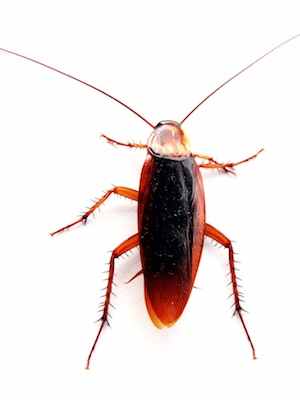 Most people might see cockroaches as good-for-nothing pests, but this germ-ridden insect could be an indirect source of new antibiotics for humans. Researchers have discovered the guts of a cockroach to be super-sanitized.
Most people might see cockroaches as good-for-nothing pests, but this germ-ridden insect could be an indirect source of new antibiotics for humans. Researchers have discovered the guts of a cockroach to be super-sanitized.
Cockroaches host the larvae of a parasitic type of wasp, which spend their formative days eating the bacteria-laden body of the cockroach from the inside out. It turns out, the wasp larva secretes chemicals that sanitize the decidedly unsanitary guts of the cockroach.
These germ-killing chemicals could eventually be developed for human uses.
Cockroach cradle
For the developing larvae, “the cockroach is the only food source and the cradle,” says biologist Gudrun Herzner at the University of Regensburg in Germany.
It’s a cradle that needs a good cleaning, because cockroaches spend time in some very unsanitary places, from trash heaps to public toilets, where you’ll find a cornucopia of bacteria, fungi and viruses that can make you, and the emerald wasp larva, sick.
Sanitizer dispenser
As the wasp larva munches its way through the microbe-laden body of the cockroach, it produces generous amounts of a clear liquid.
Herzner and her colleagues found this liquid to contain a blend of antimicrobial substances, according to their study published in the Proceedings of the National Academy of Sciences.
“The larvae seem to disperse this secretion thoroughly inside the cockroach, and in this way sanitize their cockroach hosts,” Herzner says.
One of the chemicals fights the germs that cause tuberculosis; another has a broad range of activity against bacteria, fungi, and viruses such as hepatitis C.
Herzner says it is the first time researchers have found insects using this chemical against microbes.
Insect drugs
But it’s probably not the last insect antimicrobial discovery.
Most antibiotics that doctors use have been discovered among microbes living in the soil, but if researchers turn to the insect world, microbiologist Julian Davies, at the University of British Columbia, says, “You can have a potentially new source of antibiotics. People have been looking at this. Nothing’s come out of it yet, but they’re certainly looking at it.”
Antimicrobials have been discovered everywhere from frog skin to panda blood, but none of them have made it to the medicine cabinet yet.
Davies says it can be hard to isolate useful quantities of the active chemicals in these sources, and they may be difficult chemicals to produce in the lab.
Plus, Davies says, “It’s fine to find an antibiotic, but half of them are toxic.”
Scientists are working to overcome these hurdles.
Bacteria talking?
Davies says these chemicals may be more than just microbe killers. He points to the emerging field of research on microbe-to-microbe chemical communication.
“And you can ask the question, ‘Are they killing each other, or are they talking to each other?’”
But, with antibiotic-resistant infections a growing threat worldwide, killing the microbes is scientists’ current priority.
(Originally published in VOA News)



















